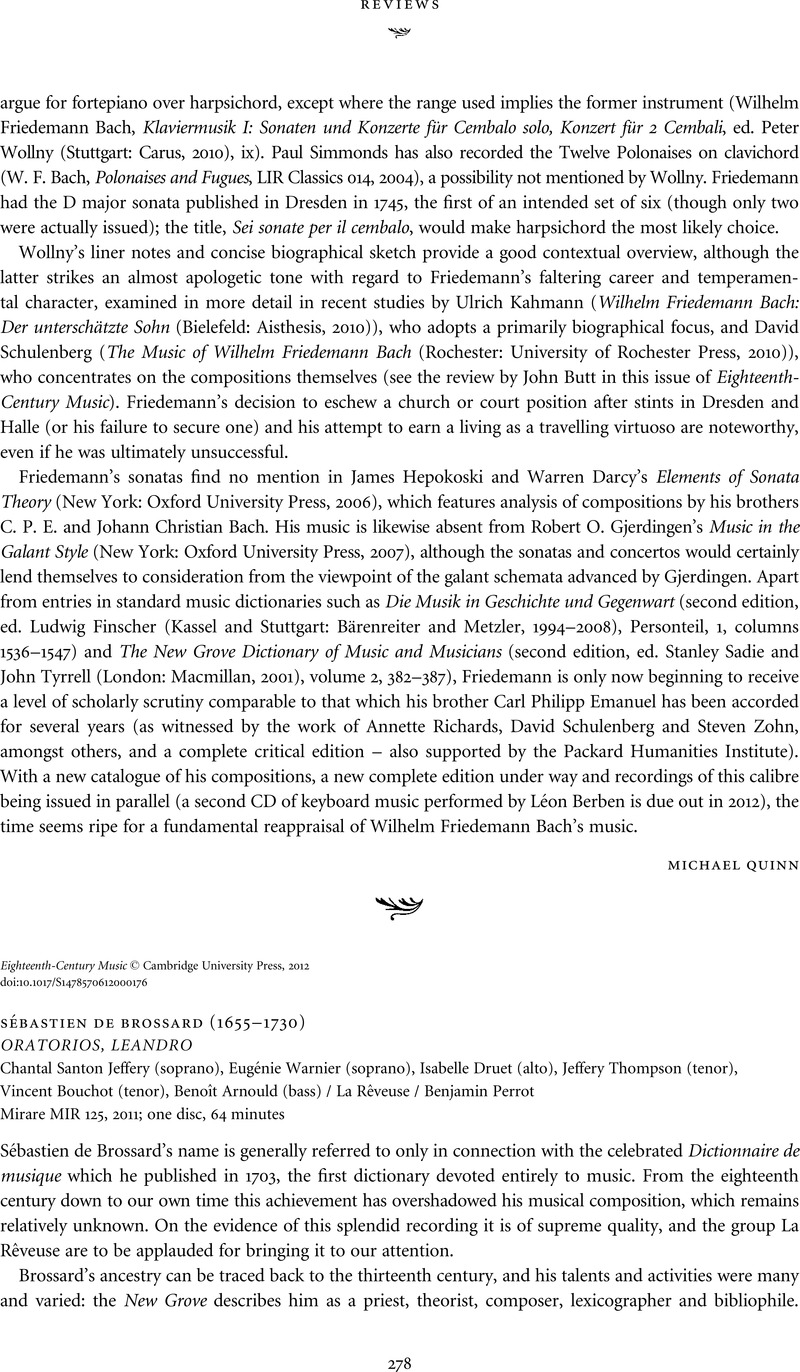No CrossRef data available.
Article contents
SÉBASTIEN DE BROSSARD (1655–1730) ORATORIOS, LEANDRO; Chantal Santon Jeffery (soprano), Eugénie Warnier (soprano), Isabelle Druet (alto), Jeffery Thompson (tenor), Vincent Bouchot (tenor), Benoît Arnould (bass) / La Rêveuse / Benjamin Perrot; Mirare MIR 125, 2011; one disc, 64 minutes
Published online by Cambridge University Press: 30 July 2012
Abstract
An abstract is not available for this content so a preview has been provided. Please use the Get access link above for information on how to access this content.

- Type
- Reviews: Recordings
- Information
- Copyright
- Copyright © Cambridge University Press 2012




